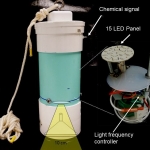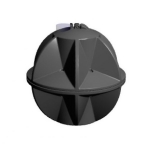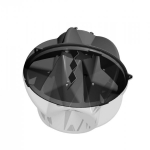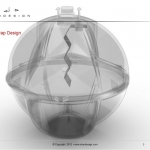In 1999, the Browman and Skiftesvik Lab submitted the first of several project proposals to the Research Council of Norway (RCN) to investigate
the sensory cues that underlie host-finding in the parasitic salmon louse (Lepeophtheirus salmonis). The objective has been to develop traps that can capture and retain salmon lice, to both monitor their abundance in the water column and to remove them from the area around salmon farms, thereby reducing parasitic infestations on salmon. These traps take advantage of information collected from unique behavioral observations and neurophysiological assays that have allowed us to characterize the optimal host signals for the parasite.
Our first project, “Sensory biology and behaviour of the free-living stages of salmon lice, Lepeophtheirus salmonis (Copepoda, Caligidae)” was funded by the RCN from 2000-2002 under project # 134613/120. That proposal, in which the development of a lice trap is mentioned explicitly, can be downloaded HERE).
Later projects (from 2002 onwards) were conducted in collaboration with with David Fields and sometimes others (see the publications below).
“Kjenner lusa på gangen” – is a video, released in 2012, about our lice trap development project in cooperation with Eker Design and the Norwegian Design Council presented by Bård Eker at Norwegian Design Day 2012. Click HERE to watch the video and HERE to read a news item from November 2011 about the project (note that both are mostly in Norwegian).
The research on which the design of these traps is based has been reported in the following publications.
Novales Flamarique, I., H.I. Browman, M. Bélanger & K. Boxaspen. 2000. Ontogenetic changes in visual responses of the parasitic salmon louse, Lepeoptheirus salmonis. Journal of Experimental Biology 203: 1649-1657.
Read the paper
Browman, H.I., K. Boxaspen & P. Kuhn. 2004. The effect of light on the settlement of the parasitic salmon louse (Lepeophtheirus salmonis) onto Atlantic salmon (Salmo salar). Journal of Fish Diseases 27: 701-708.
Read the paper
Fields, D., M. Weissburg & H.I. Browman. 2007. Chemoreception in the salmon louse (Lepeoptheirus salmonis): an electrophysiological approach. Diseases of Aquatic Organisms. 78: 161-168.
Read the paper
Fields, D.M., A.B. Skiftesvik & H.I. Browman. 2018. Behavioural responses of infective-stage copepodids of the salmon louse (Lepeophtheirus salmonis, Copepoda:Caligidae) to host-related sensory cues. Journal of Fish Diseases 41: 875-884.
Read the paper
View the cover image
Núñez-Acuña, G., C. Gallardo-Escárate, D.M. Fields, S. Shema, A.B. Skiftesvik, I. Ormazábal & H.I. Browman. 2018. The Atlantic salmon (Salmo salar) antimicrobial peptide Cathelicidin-2 is a molecular host recognition signal for the salmon louse (Lepeophtheirus salmonis). Scientific Reports. (2018) 8:13738 | DOI:10.1038/s41598-018-31885-6.
Read the paper
Núñez-Acuña, G., C. Gallardo-Escárate, A.B. Skiftesvik, D.M. Fields & H.I. Browman. 2019. Silencing of ionotropic receptor 25a decreases chemosensory activity of the salmon louse Lepeophtheirus salmonis during the infective stage. Gene 697: 35-39. DOI: 10.1016/j.gene.2019.02.012.
Read the paper
Contact Howard Browman for more information.




